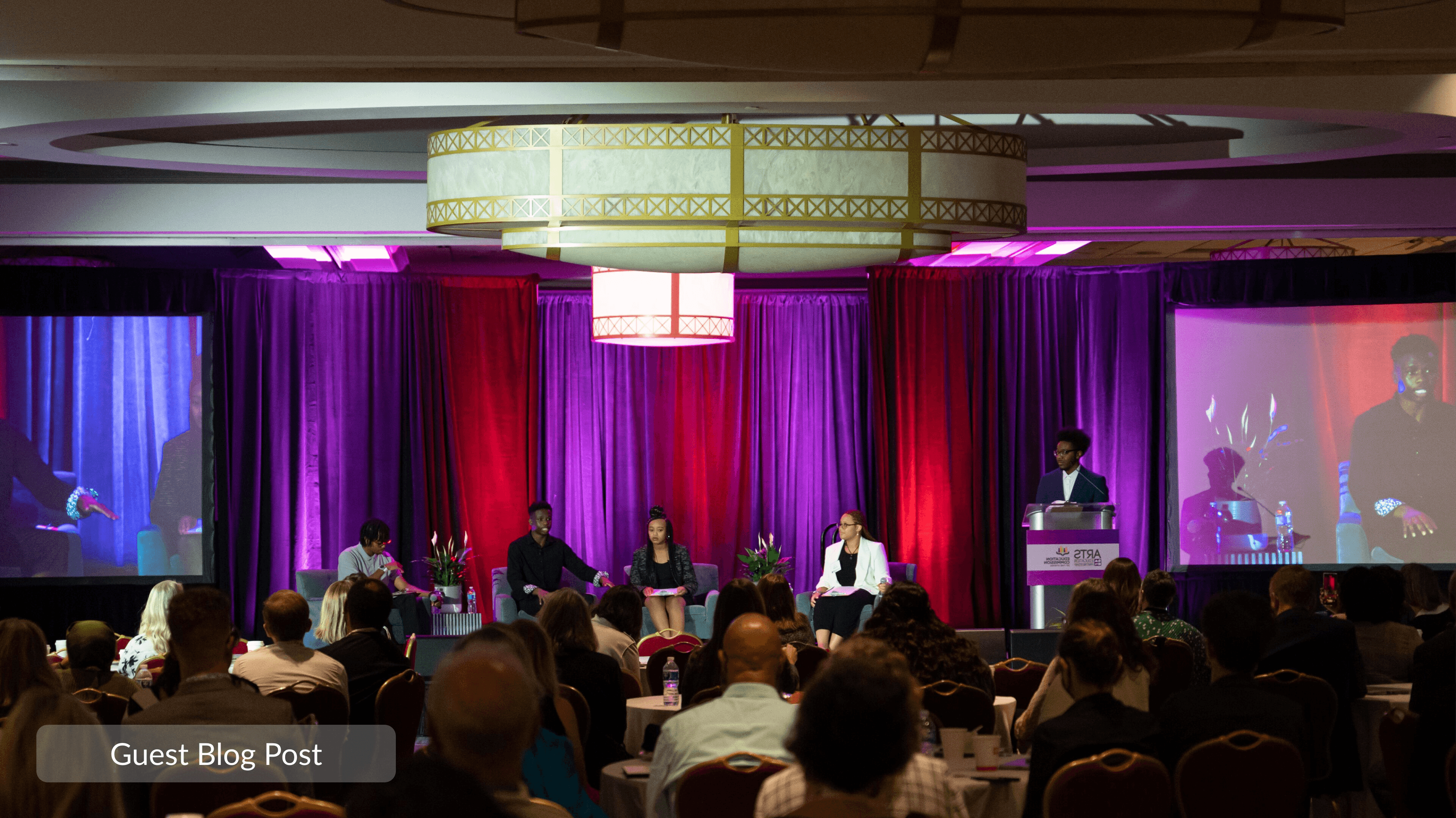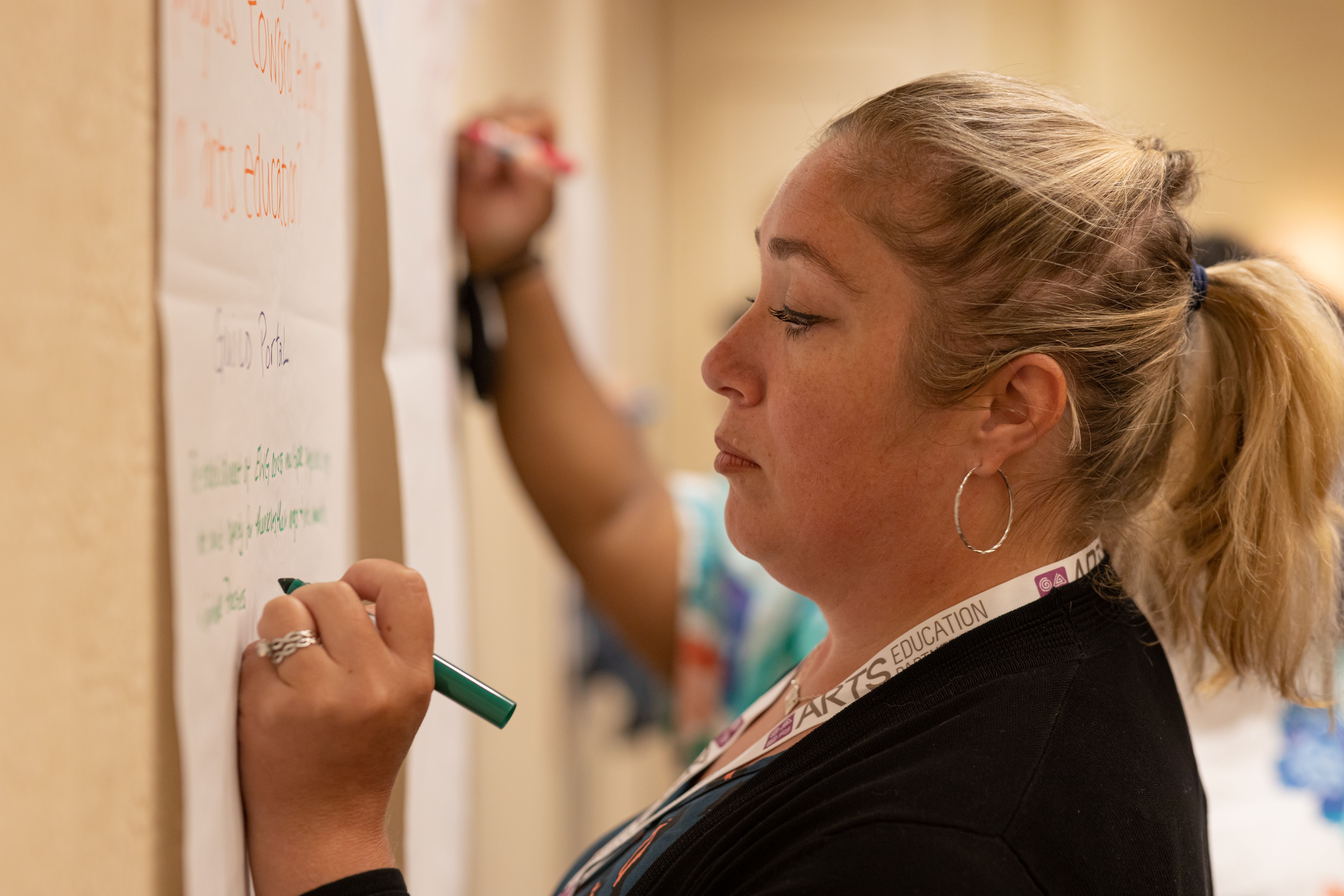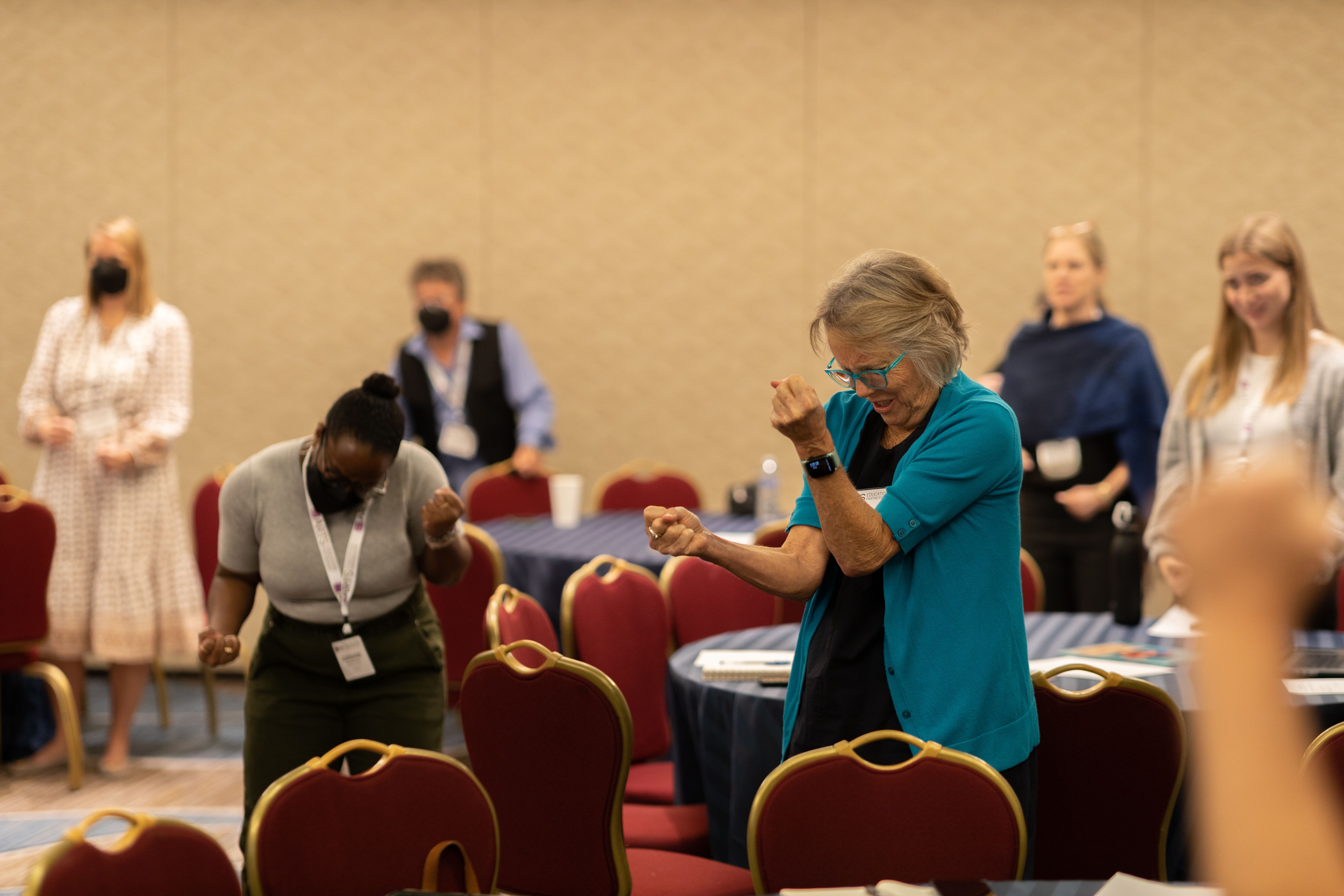Guest Blog Post: Arts Education Partnership

In this week’s guest blog post, Director Jamie Kasper spotlights the transformative work of the Arts Education Partnership (AEP)—a vibrant network of more than 270 partners and affiliates committed to advancing arts in education. From innovative approaches like social prescribing to initiatives aimed at violence prevention, AEP is reimagining how the arts can transform learning, spark connection, and build stronger, more resilient communities.
Arts Education Partnership: A national network of more than 200 organizations dedicated to advancing arts education
I asked ChatGPT to write a joke about arts education and neuroscience so I could start this post with a witty opening. However, it turns out artificial intelligence platforms are absolutely miserable at creating a joke that’s funny – or even comprehensible. So instead, I’ll get straight to introducing the Arts Education Partnership (AEP).
Two federal agencies created AEP in 1995 in response to three big national developments in arts education. First, federal education policy included the arts as part of core learning for the first time. Second, the first-ever set of national voluntary arts standards outlined what students should know and be able to do as a result of arts learning. And finally, the National Assessment Governing Board included arts in the National Assessment of Educational Progress for the first time. The National Endowment for the Arts (NEA) and U.S. Department of Education recognized that federal support for arts education in a decentralized system like the United States would require state and local champions to share what worked and what didn’t as states and communities implemented new policies. The two agencies created AEP to network those champions and provide a platform for them to share their work.
 Participants at AEP's Annual Convening learning together
Participants at AEP's Annual Convening learning togetherThirty years later, AEP continues to maintain its network, now more than 270 entities strong. Our partners and affiliates work at all levels and in all parts of the arts education ecosystem: national, state and local; homes, schools and communities; practitioners, researchers, funders and more. The network represents dance, folk arts, Indigenous arts, media arts, music, theatre, visual arts, multidisciplinary arts and more.
AEP is governed by a cooperative agreement, a special structure that allows partnership between a not-for-profit organization and a federal agency – in this case, the NEA – that's deeper than a traditional grant. AEP is currently housed within Education Commission of the States, an education policy organization founded 60 years ago by state legislators and other state-level policymakers. In the annual cooperative agreement, the NEA defines issue areas aligned with federal priorities to guide AEP’s work. Our issue areas this year are educator workforce, data, health and wellness, juvenile justice and STEAM (science, technology, engineering, arts and math).
Beyond the issue areas, we’re always on the lookout for emerging conversations and topics. Two of the topics we’ve been engaging with this year have interesting links to communities beyond our usual networks. The first is one you likely know about – social prescribing, the practice of prescribing arts and other social experiences to improve health outcomes. The second may be less well-known in science and education circles: targeted violence and terrorism prevention (TVTP).
We became connected last year to the TVTP network through the Department of Homeland Security’s Center for Prevention Programs and Partnerships. We've been exploring the idea that arts education can be a primary prevention strategy for more deeply connecting people to their communities and reducing isolation that can lead to targeted violence. You might remember the push in the early 2000s to connect arts learning to higher test scores, primarily in reading and math. That connection always seemed contrived to me; why focus on changing arts instruction to teach reading and math when you could instead focus on providing better reading and math instruction? Why not allow good arts instruction to do what it does best – teach knowledge and skills that encourage learners to make sense of the world and develop their voices to tell their stories and the stories of their communities? If that results in higher test scores, okay, but perhaps we’d better serve learners if we focused on providing excellent arts learning experiences. Preventing violence through community connection and arts seems like a better, more natural fit.
 Participants at AEP's Annual Convening learning together
Participants at AEP's Annual Convening learning togetherAEP works every day to ensure that U.S. students have access to an excellent arts education. However, we recognize that these young people live in a connected world and are constantly engaging with ideas and topics that intersect. Arts learning has been shown to rewire the brains of young people, increasing capacity for empathy, improving short-term memory, and boosting problem-solving skills. We believe arts education and neuroscience, along with the topics mentioned above, intersect in many different ways.
Are you interested in exploring these ideas? Get involved with AEP! Our network is free to join, and it connects you to people doing work across the arts education ecosystem. Want to connect with someone providing ukelele lessons to young people? We can help! Interested in talking with someone working on federal arts policy? We can introduce you!
Why do arts education and neuroscience go hand-in-hand? Because they’re natural complements to each other’s work. (No joke here…sorry AI chatbot!)
If you’re interested in reading more details about the context and history surrounding AEP’s founding and reflections from people who were leading the work at that time, check out our resource from 2020 - Reflecting Back & Projecting Forward: 25 Years of the Arts Education Partnership.
